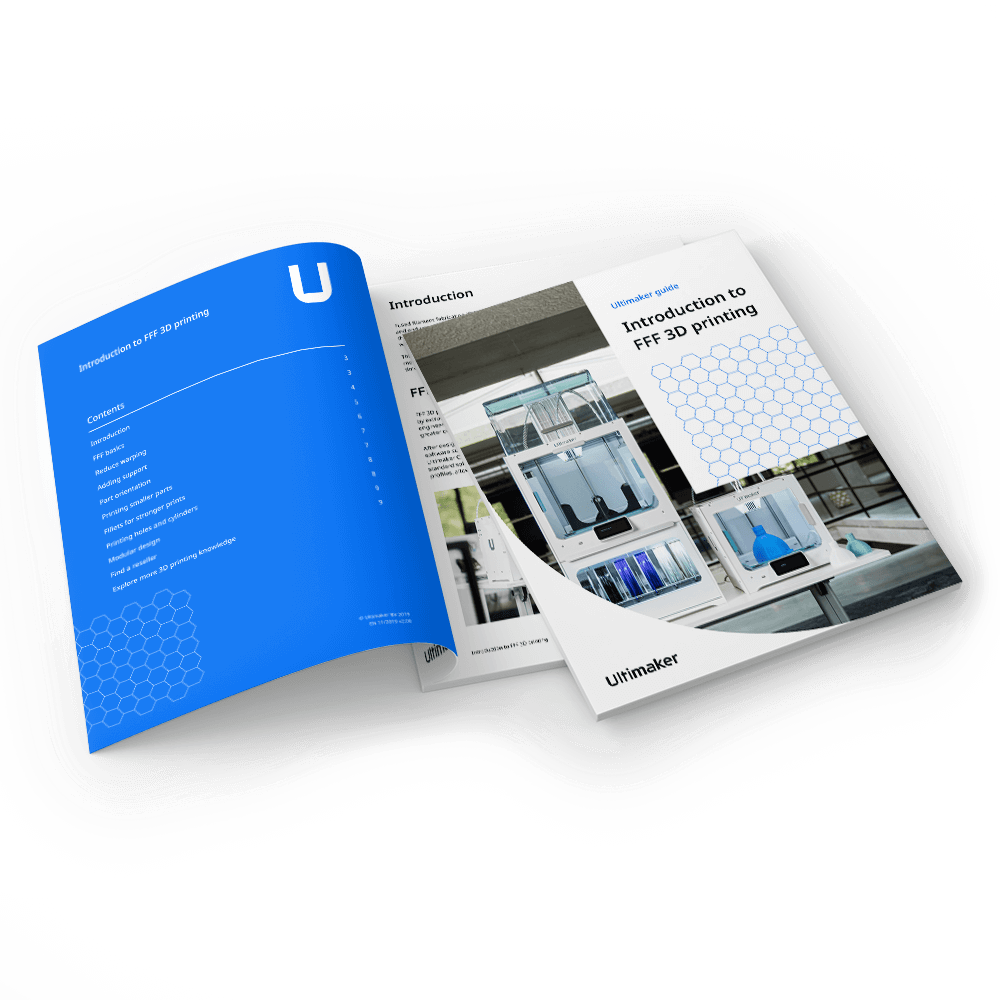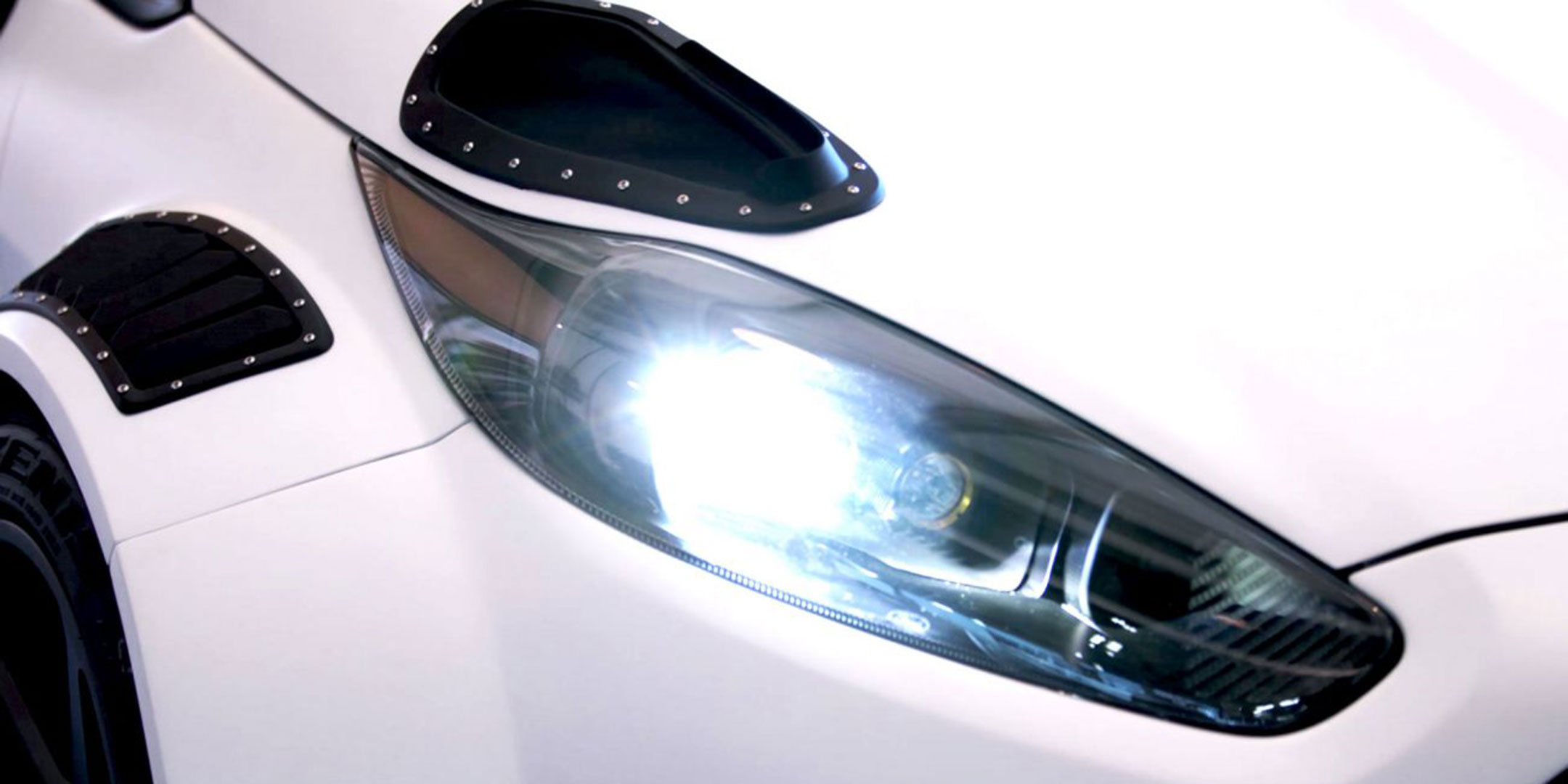The current benefits of 3D printing
Desktop 3D printers were first seen as gadgets for hobbyists and home users. Few could have predicted how the technology would be embraced by professionals and their organizations around the world.


Free in-depth white paper
Discover the FFF 3D printing workflow in practice based on insights from Ultimaker Application Engineers, including:
• Which design rules to follow for print success
• How make prints stronger and more repeatable
• The key to achieving accuracy and tight tolerances
• And lots more handy tips and tricks!
3D printing has had enormous impact on the way people do business. In a relatively short timeframe, thousands of companies around the world have implemented it into their day-to-day workflows, using their 3D printers to create prototypes, tools, and end-use products.
Is 3D printing the future of your industry? We’ve compiled some information about how additive manufacturing has benefited many different sectors – and how it will continue to do so in the coming years.
Desktop 3D printers were first seen as gadgets for hobbyists and home users. Few could have predicted how the technology would be embraced by professionals and their organizations around the world.
The technology is now used in industries and sectors including education, healthcare, and aerospace. It offers the following benefits:
Cost-effective, speedy experimentation. Designs can quickly and easily be printed and tested. If required, further iterations can be created at affordable price points. This is especially useful for companies which want to make prototypes in-house.
Tooling. Businesses can rapidly print jigs, fixtures, and tools for their machines or vehicles. They can also customize them to suit their exact requirements.
Showcasing ideas. Sometimes, 2D illustrations aren’t enough to convey complex concepts. 3D printing enables ideas to be viewed in three dimensions and explored in greater depth.
Promoting better health. 3D printing can be used to create prosthetic limbs, assist dentists, print replacement knee and hip joints, and much more.
Educating and exploring. Schools use 3D printers to encourage children to design, test, and refine design concepts. 3D models can be created to explain aspects of schools’ curricula.
Making end-use products. 3D printers present new possibilities for retailers, designers, and more. Even metal products (such as jewelry) can be printed, and bespoke items made for customers.
3D printing has transformed industries in recent years. Here’s a run-through of some of the key innovations from 2018 and 2019.
2018 was a defining year for additive manufacturing. At this point, the people wondering if 3D printing was the future suddenly realized it was.
3D printing a house. The Massachusetts Institute of Technology created a 3D printer that can print an entire building in just 14 hours. Their printer extruded either concrete or insulating material to make a basic dwelling space.
3D printing in space. The International Space Station printed the first tool in space, using a low-gravity 3D printer. This enabled workers to access the tools they needed for maintenance far more quickly, rather than waiting for them to be delivered from Earth.
3D printing prosthetics. This is one area that progressed significantly in 2018. Engineers developed prosthetic limbs designed for specific purposes (such as playing instruments). The previous year, Open Bionics used its Ultimaker 3D printer to create replacement limbs for amputees.
2019 saw increasing numbers of companies adopt 3D printing – establishing the technology as one of the most significant developments of the 21st century.
Creating Met Gala gowns. Fashion designer Zac Posen joined forces with GE Additive to 3D print gowns for the Met Gala event. Although this wasn’t the first time 3D printing had been used in fashion, it was the most high-profile to date. Cincinnati Art Museum explored the relationship between additive manufacturing and fashion in an exhibition.
Printing with organic materials. The range of available materials continued to expand, with one notable example being the introduction of organic materials. This meant that medical practices could effectively print using biological tissue, when using specially adapted bioprinters.
3D printing has already made a big difference to industries around the world. It has sped up important processes, boosted productivity, and, in some cases, even improved health and well-being.
Where will the technology next take industries? Here are a few predictions.
Using 3D printing, companies like Gerhard Schubert GmbH are revolutionizing the ways in which they operate, creating "digital warehouses" of parts and tools that can be printed on-demand by both manufacturing organizations themselves, as well as their customers. Additionally, manufacturers can make use of an ever-growing stable of 3D printing materials, which enable the creation of parts that are heat and chemical-resistant, flame-retardant, ESD-safe, and more.
Some of the most exciting developments may well be in the healthcare sector. Prosthetics are likely to become even more mechanically viable, not to mention more aesthetically appealing. Bioprinting looks set to take off soon too – with scientists using 3D printers to create organs and other human tissue.
We predict that the next few years will see engineering and construction companies adopt 3D printing in a big way. 2018 already saw the development of a 3D printer capable of making a basic home. The ability of construction firms to speedily print houses from scratch, then, could be a game-changer. Also, 3D printing customized fixtures and fittings may be an option.
Of course, architects are already ahead of the game, using 3D printing to create models of their designs to show clients.
Sustainability and eco-friendliness are becoming increasingly important. KLM Royal Dutch Airlines, for example, uses recycled plastic to create functional parts for engineering and maintenance uses. Other organizations are printing artificial coral to restore some of the world’s reefs.
Flexible filaments such as TPU enable automotive companies to create parts that behave like rubber. They also use 3D printing to swiftly create the tools they require for specific jobs. It seems likely that increasing numbers of manufacturers will create end-use parts too, such as Tucci Hot Rods.

Want to find out how the future of your industry is being made possible today with 3D printing?